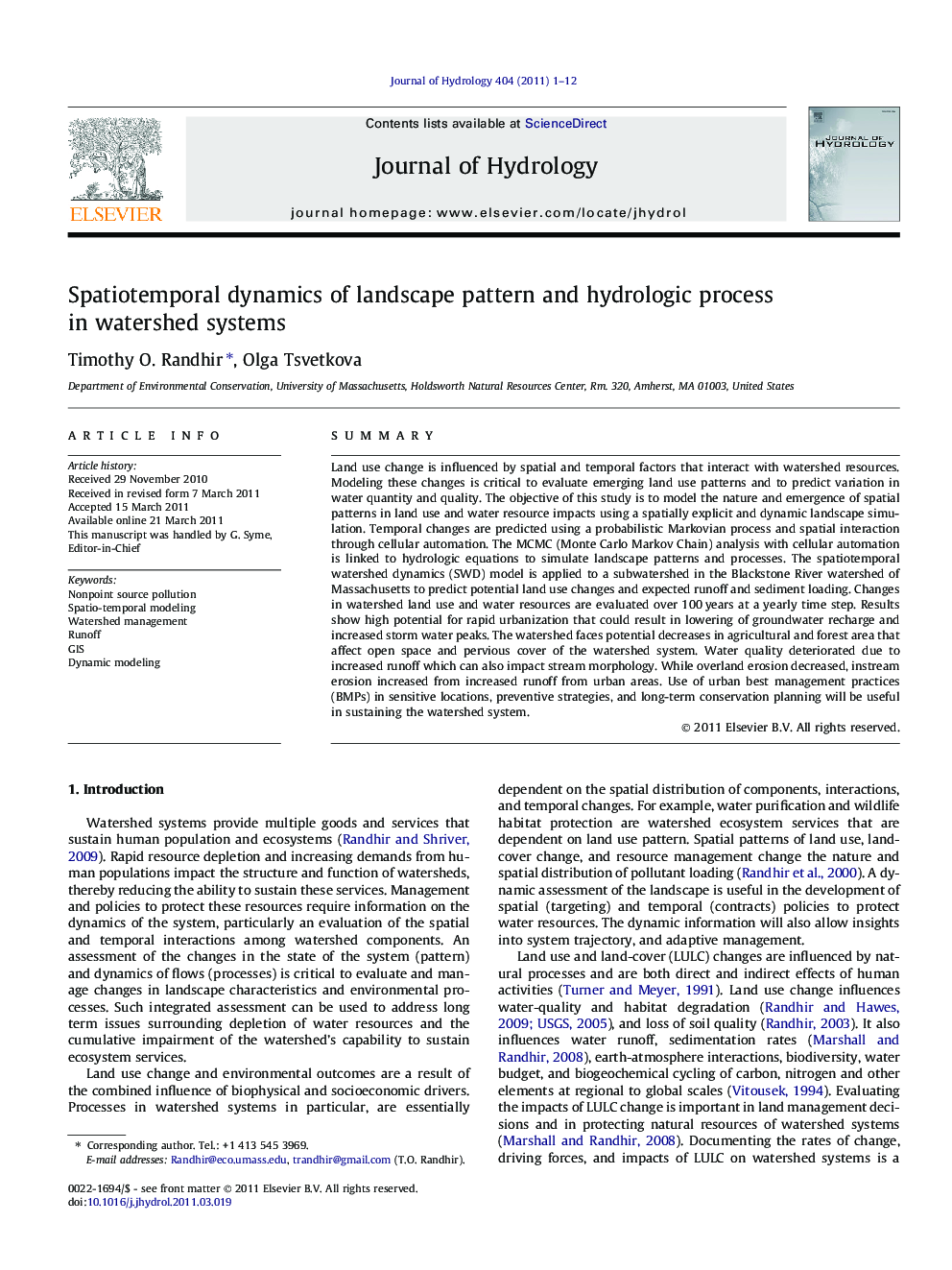| Article ID | Journal | Published Year | Pages | File Type |
|---|---|---|---|---|
| 4577694 | Journal of Hydrology | 2011 | 12 Pages |
SummaryLand use change is influenced by spatial and temporal factors that interact with watershed resources. Modeling these changes is critical to evaluate emerging land use patterns and to predict variation in water quantity and quality. The objective of this study is to model the nature and emergence of spatial patterns in land use and water resource impacts using a spatially explicit and dynamic landscape simulation. Temporal changes are predicted using a probabilistic Markovian process and spatial interaction through cellular automation. The MCMC (Monte Carlo Markov Chain) analysis with cellular automation is linked to hydrologic equations to simulate landscape patterns and processes. The spatiotemporal watershed dynamics (SWD) model is applied to a subwatershed in the Blackstone River watershed of Massachusetts to predict potential land use changes and expected runoff and sediment loading. Changes in watershed land use and water resources are evaluated over 100 years at a yearly time step. Results show high potential for rapid urbanization that could result in lowering of groundwater recharge and increased storm water peaks. The watershed faces potential decreases in agricultural and forest area that affect open space and pervious cover of the watershed system. Water quality deteriorated due to increased runoff which can also impact stream morphology. While overland erosion decreased, instream erosion increased from increased runoff from urban areas. Use of urban best management practices (BMPs) in sensitive locations, preventive strategies, and long-term conservation planning will be useful in sustaining the watershed system.
► We develop a unique approach to model spatial and temporal changes in watershed land use and hydrologic changes for conservation policy. ► We evaluate opportunities to mitigate land use impacts on water resources by incorporating spatial distribution, temporal trends, and policy options for sustainability. ► Nature and emergence of spatial patterns in land use have implications on water quantity and quality of watersheds. ► Urbanization poses a serious threat to watersheds resulting in future storm water issues at sensitive locations. ► Best management practices in sensitive locations and long-term conservation planning are vital to sustaining watershed systems.
